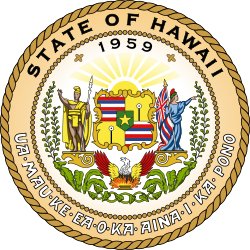| |||||||||||||||||||||||||||||||
All 25 seats in the Hawaii Senate | |||||||||||||||||||||||||||||||
|---|---|---|---|---|---|---|---|---|---|---|---|---|---|---|---|---|---|---|---|---|---|---|---|---|---|---|---|---|---|---|---|
| |||||||||||||||||||||||||||||||
 Results: Democratic hold Republican hold | |||||||||||||||||||||||||||||||
| |||||||||||||||||||||||||||||||
| Elections in Hawaii |
|---|
 |
The 2012 Hawaii Senate Elections were held on November 6, 2012. State senators in all 25 districts of the Hawaii Senate were up for election. 9 seats were won in the primary uncontested. No seats changed parties in this election.
Contents
- Overview
- Predictions
- Results
- District 1
- District 2
- District 3
- District 4
- District 5
- District 6
- District 7
- District 8
- District 9
- District 10
- District 11
- District 12
- District 13
- District 14
- District 15
- District 16
- District 17
- District 18
- District 19
- District 20
- District 21
- District 22
- District 23
- District 24
- District 25
- See also
- References

